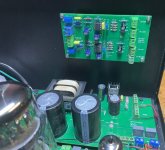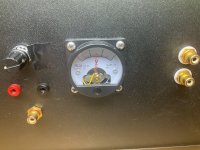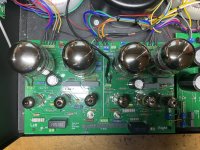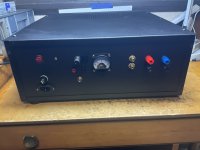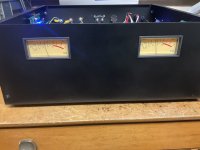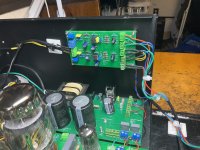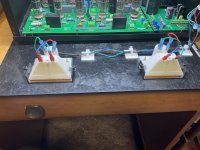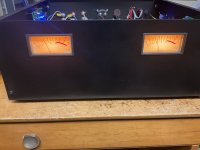Have completed my Citation II upgrade to a pcb base unit. My post last December 2023 had start hum and buzz problems.
After 8 months have all the problems solved. The new unit I call Citation 2024.
The corrections were the following:
1. New main pcb, left & right channels totally isolated except for power and ground.
2. Added two 50 ohm resistors to ground on each of the 6.3 VAC heater lines.
3. Added .1uF 630Vdc caps on -69VDC and +460 VDC outputs.
4. Added a 10k 1/2w resistor across the 1 M input resistors.
5. Added a Speaker Dethumper relay on speaker outputs. Delay time 45 seconds.
Been running for a week, sounds great .
After 8 months have all the problems solved. The new unit I call Citation 2024.
The corrections were the following:
1. New main pcb, left & right channels totally isolated except for power and ground.
2. Added two 50 ohm resistors to ground on each of the 6.3 VAC heater lines.
3. Added .1uF 630Vdc caps on -69VDC and +460 VDC outputs.
4. Added a 10k 1/2w resistor across the 1 M input resistors.
5. Added a Speaker Dethumper relay on speaker outputs. Delay time 45 seconds.
Been running for a week, sounds great .
Attachments
-
Gerber_files.zip1.9 MB · Views: 57
-
Schematics.zip883.6 KB · Views: 116
-
PDF.zip3.5 MB · Views: 85
-
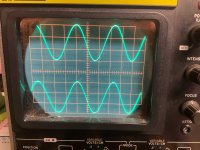 2k Dual channel.jpeg549.8 KB · Views: 130
2k Dual channel.jpeg549.8 KB · Views: 130 -
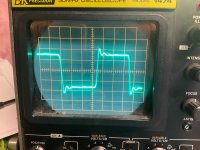 10K square wave.jpeg484.4 KB · Views: 114
10K square wave.jpeg484.4 KB · Views: 114 -
 Case_topview.jpeg612.3 KB · Views: 116
Case_topview.jpeg612.3 KB · Views: 116 -
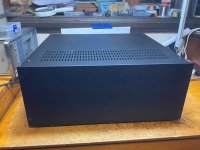 Case frontview w Cover.jpeg442.9 KB · Views: 134
Case frontview w Cover.jpeg442.9 KB · Views: 134 -
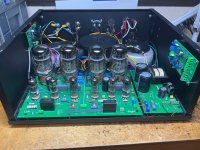 Front View.jpeg607.3 KB · Views: 128
Front View.jpeg607.3 KB · Views: 128
Some more pictures of citation 2024 amp. In the process of adding two vu meters to front of unit . Will do pictures when completed.
I believe the single trace is one channel 2k signal.
Last photo is my VU driver board.
Lee
I believe the single trace is one channel 2k signal.
Last photo is my VU driver board.
Lee
Attachments
Added two VU meters to amp.
Added a spst switch on back panel to turn off vu meter lights.
Done for now, might change cover to add more slots for ventilation.
Want to run it for awhile to see hear how it sounds.
Added a spst switch on back panel to turn off vu meter lights.
Done for now, might change cover to add more slots for ventilation.
Want to run it for awhile to see hear how it sounds.
Attachments
I was wondering whether such an amp can live inside an enclosure without a fan. A more open top would help but the bottom is all covered with PCBs so not enough cold air can enter the case. There is no space on the back panel for a fan though…might change cover to add more slots for ventilation
Absolutely. Provided that the back and top are properly ventilated. That generally means a fill factor on those panels of no more than about 60% or 70%.I was wondering whether such an amp can live inside an enclosure without a fan.
People get far too concerned about heat without measuring. The key to understanding heat in vacuum tube equipment is to understand that heat dissipation in vacuum tubes is almost entirely by infrared radiation. So if you have a vacuum tube dissipating 20W, then that 20W will be distributed to every thing that "sees" the tube (i.e. visible in a direct path). The IR radiation density impinging on other things in the amp falls off as 1/r^2 distance from the tube. Spread that heat across a bigger area inside the case (using physical separation) and nothing will get too warm.
Most original tube equipment operated without any active ventilation. The power densities are just not high enough to require active air movement unless high dissipation tubes are packed in very closely. Fans are for computers and other high power density electronics.
All, testing my Vu circuit, it seems to run ok from my test TM100 Radio Shack tuner, but my output from my McIntosh C2200 tuner seems slot lower.
Measuring the radio shack tuner is around 500mv , while the output at normal level from the preamp is around 11 mv. So my Vu doesn’t seem to see my signal at all.
Any ideas for a new beefer circuit? Oh, for your info, my meters are TN-73.
I don’t really need the meters, but being a old audio engineer, I really like them
Lee
Measuring the radio shack tuner is around 500mv , while the output at normal level from the preamp is around 11 mv. So my Vu doesn’t seem to see my signal at all.
Any ideas for a new beefer circuit? Oh, for your info, my meters are TN-73.
I don’t really need the meters, but being a old audio engineer, I really like them
Lee
This is a massive amount of work!! PCB software is some of the most difficult (and miserable imho) to master.
What is the power output at clipping?
What is the power output at clipping?
Last edited:
- Home
- Amplifiers
- Tubes / Valves
- Citation 2024
